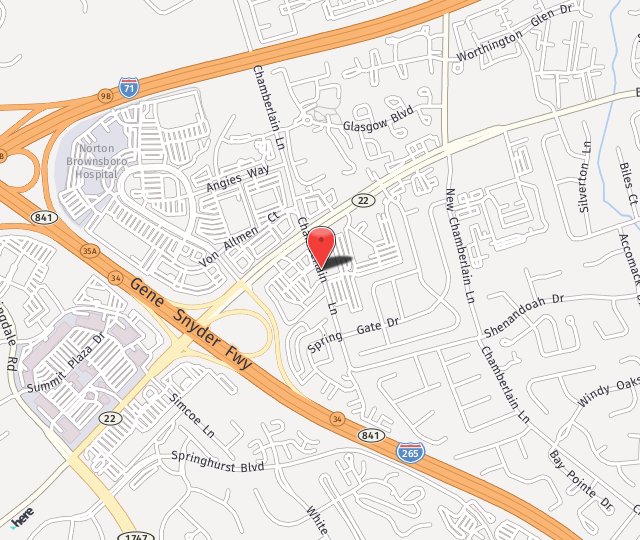Eyelid Surgery in Louisville, Lexington, Kentucky
Indications
Excessive, wrinkled, or sagging skin of the upper or lower eyelids. Loss of a natural upper eyelid crease. Puffy pouches of fat in the upper or lower eyelid that create an aged or tired appearance.
Intended Results
A more youthful and rested appearance of the eyes. A more open appearance of the eye socket.
Eyelid Lift (Blepharoplasty) Procedure
Eyelid surgery is usually done at our own on-site, AAAASF-Certified surgery center.
Upper Blepharoplasty alone can sometimes be performed in our office procedure room under local anesthetic with an oral sedative. In the upper lids, the incision is made with a black diamond scalpel and is hidden in the natural crease above the lid margin. Skin, with a small sliver of redundant muscle and fat excess, are all removed.
Lower Blepharoplasty (or Lower and Upper Blepharoplasty at the same time) is always done under anesthesia. The lower lids are approached first through an incision made on the inside of the lid. The fat is removed with a fine electric needle to limit bruising. Any extra skin is “pinched” below the lash line and trimmed with a fine scissor. Several sutures are placed to close the incision.
Other Options
If skin wrinkles of the lower eyelid or crows feet area are present with the puffy eyelids, these are not treated effectively with blepharoplasty alone. We will recommend that a neurotoxin like Botox® or Dysport® be placed into the wrinkles and laser resurfacing be done shortly thereafter. Sometimes, the laser resurfacing can replace the surgical removal of skin and be done at the time of the blepharoplasty.
Recuperation and Healing
Sutures are removed in 7 days. Patients may experience a stinging sensation, light sensitivity, and trouble reading up close for several days. Bruising and swelling will typically resolve in 10-14 days. Patients may return to work within a week. Eye makeup can be worn after the sutures are removed, and contact lenses can be utilized in 7-10 days.
The Potential Risks
The specific risks and suitability of this procedure for a given individual can be determined only at the time of consultation. All surgical procedures have some degree of risk. Minor complications that do not affect the outcome occur occasionally. Major complications are rare.
Below are the potential risks that can occur from an eyelid lift:
- Bleeding and bruising – Bleeding and bruising are common side effects following any kind of surgical procedure. They typically subside after a few days, but excessive bleeding can increase your risk of experiencing complications.
- Increased risk of infection – Infections are more likely to occur following an eyelid lift. It is important to follow your surgeon’s post-operative instructions to minimize the risk. If you notice any symptoms of an infection, contact Dr. Salzman immediately.
- Dry eyes – Another common side effect of an eyelid lift is dry eyes. Dry eyes can cause discomfort and may require the use of eye drops to keep them lubricated. This side effect is usually temporary, but in rare cases, it can last long-term.
- Asymmetry in the eyes – Although Dr. Salzman is an experienced plastic surgeon, there is a small risk of eye asymmetry after an eyelid lift. However, this can be corrected through a revision procedure.
- Scarring – Although Dr. Salzman will do everything possible to minimize scarring, mild scarring is inevitable. But these scars are typically hidden in the creases of your eyes.
- Changes in your vision – This is a rare risk, but it is possible to experience some changes in your vision. Some of these changes can include double vision and having problems closing the eyelid completely. If you experience any changes in your vision, contact Dr. Salzman immediately.
- Numbness or tingling – Experiencing temporary numbness or tingling is a common side effect following eyelid surgery. They are temporary and fade away on their own, but in rare cases, it is possible to experience persistent numbness and even nerve damage.
Dr. Salzman will discuss these risks in greater detail during your consultation with him.
Who Are Good Candidates For Eyelid Lift Surgery?
As with any type of surgical procedure, patients must be first deemed as a good candidate for eyelid lift surgery.
You are a good candidate for eyelid lift surgery if you meet the following criteria:
- You have excess skin or fat deposits around your upper and lower eyelids that cause an aged or tired appearance.
- You have bags or puffiness underneath your eyes as a result of skin laxity.
- You are in good overall health with no active infections or medical conditions that can interfere with the healing process or cause complications.
- You are a non-smoker or are willing to quit smoking as it can negatively impact the healing process.
- You have realistic expectations regarding the procedure.
- You are ready to commit to the post-operative instructions provided to you by Dr. Salzman.
Dr. Salzman will assess your medical history during your consultation with him and ask about your current lifestyle. This is done to mitigate the potential risks and complications that can arise. If you are not deemed a good candidate, Dr. Salzman can offer you safer alternatives.
Schedule a Consultation
If you are interested in having an eyelid lift or would like to know more, Dr. Marc J. Salzman is ready to help. Contact us at 941-348-1243 to schedule an appointment today.

